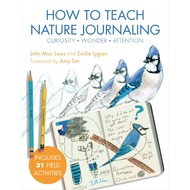How to Teach Nature Journaling (Print and free PDF download) • John Muir Laws
(View Complete Item Description)"How to Teach Nature Journaling" by John Muir Laws and Emilie Lygren (2020) is a free PDF curriculum guide to support educators as they model and teach science thinking by keeping a nature journal. The benefits of nature journaling are that it helps students to: • slow down and pay attention • wonder and ask questions • supporting creativity and critical thinking skills • by seeing themselves as scientists, engaging in authentic science inquiry • nurturing a connection with nature • building equity” (p. 7 of How to Teach Nature Journaling by Law and Muir, 2020)
Material Type: Activity/Lab, Formative Assessment, Learning Task, Lesson













